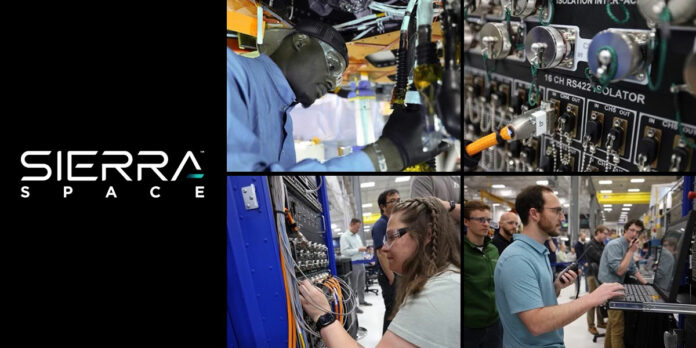LOUISVILLE, Colo. – The revolutionary Dream Chaser spaceplane powered up in a simulated test recently, Sierra Space announced.
Dream Chaser represents a groundbreaking leap in space transportation technology, the company said. It is designed to provide reliable and cost-effective access to space for a wide range of applications. With its unique lifting body design, the spaceplane combines the flexibility of an aircraft with the capabilities of a spacecraft, revolutionizing space travel.
The power-up of Dream Chaser signifies the activation of its integrated systems, showcasing the culmination of years of rigorous engineering, design, and testing, Sierra Space said.
“This is a milestone that points to the future and is a key moment in a long journey for Dream Chaser,” said Tom Vice, CEO of Sierra Space. “With this significant achievement, our Dream Chaser spaceplane is poised to redefine commercial space travel, opening up new possibilities for scientific research, technological advancements, and economic opportunities in space.”
Sierra Space simulated the power that will be generated from Dream Chaser’s solar arrays once on orbit. Test engineers plugged that power into Dream Chaser and began turning on systems. Sierra Space exercised flight computers, base processors and low-voltage distribution units.
Sierra Space has a facility in Huntsville and conducts tests at the Marshall Space Flight Center.
“NASA’s Marshall Space Flight Center has a rich history in leading highly-complex testing for innovative systems and technologies,” said Vice. “… we’re expanding our collaboration activities with Marshall, where we will be able to tap into that wealth of expertise, talent and facility capabilities at a much deeper level.”
Dream Chaser is a reusable, fully autonomous, orbital spaceplane designed to transport cargo to low-Earth orbit destinations such as the International Space Station and land at conventional runways, including Huntsville International Airport.
Last year, Federal Aviation Administration issued a license allowing the space plane to land at the airport as it re-enters from space.
Measuring about one-quarter the size of the Space Shuttle, it features autonomous launch, flight, and landing capabilities with a smooth 1.5 low-G re-entry on compatible commercial runways worldwide.
Don’t miss out! Subscribe to our email newsletter to have all our smart stories delivered to your inbox.



